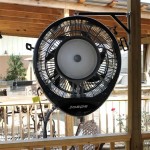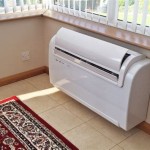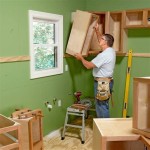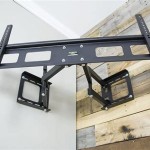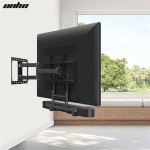Wall Mounted Space Heater Panels: A Comprehensive Guide
Wall mounted space heater panels represent a modern approach to supplemental heating, offering a blend of efficiency, aesthetics, and space-saving design. Unlike traditional space heaters that occupy floor space and rely on convection, these panels often utilize radiant heat, offering a different method of warming a room. Understanding their functionality, benefits, and limitations is crucial for making an informed decision about whether a wall mounted space heater panel is suitable for a given heating need.
This article aims to provide a detailed overview of wall mounted space heater panels, exploring their working principles, advantages, disadvantages, installation considerations, and factors to consider when selecting a suitable model. The information presented intends to equip the reader with the knowledge necessary to assess the viability of this heating solution for their specific circumstances.
Understanding Radiant Heat and Panel Construction
The core principle behind many wall mounted space heater panels is radiant heating. Radiant heat, unlike convection heating, does not rely on heating the air itself. Instead, it warms objects and surfaces directly. This means that the heat is felt immediately upon entering the room, as the radiant energy is absorbed by the body and surrounding objects. Traditional convection heaters, on the other hand, heat the air, which then circulates to warm the room. This process can be slower and less efficient, as warm air tends to rise, leading to temperature stratification within the room.
The construction of a wall mounted space heater panel typically involves a heating element embedded within a flat panel. This panel is usually made of a material that is efficient at radiating heat, such as ceramic, glass, or metal. The heating element is energized by electricity, causing the panel to heat up and emit radiant energy. Some models incorporate a thermostat to regulate the temperature and prevent overheating. Many also include safety features like tip-over protection and automatic shut-off mechanisms.
The design of the panel is often sleek and minimalist, intended to blend seamlessly with the existing décor. The slim profile allows for discreet mounting on a wall, freeing up valuable floor space. The surface of the panel may be smooth or textured, and available in a range of colors and finishes to suit different aesthetic preferences. Some panels even feature integrated artwork or mirrors, further enhancing their visual appeal and functional integration into the room.
Advantages of Wall Mounted Space Heater Panels
Wall mounted space heater panels offer several advantages over traditional space heaters, making them an appealing choice for certain heating applications. These advantages include space saving, even heat distribution, energy efficiency (in some cases), and enhanced safety features.
Space Saving: One of the primary benefits of wall mounted panels is their compact design. By mounting the heater on the wall, valuable floor space is preserved. This is particularly advantageous in smaller rooms or areas where space is limited, such as bathrooms, hallways, or offices. Traditional portable heaters can be bulky and take up significant floor area, making them less practical in confined spaces. Wall mounted panels offer a discreet and unobtrusive heating solution without compromising on functionality.
Even Heat Distribution (with radiant models): Radiant heat, as previously discussed, provides a more even distribution of heat compared to convection heaters. Rather than heating the air, radiant heat directly warms objects and people in its path. This results in a more consistent temperature throughout the room, minimizing temperature gradients and eliminating cold spots. This even heat distribution contributes to a more comfortable and energy-efficient heating experience. While some wall-mounted models use convection, radiant models generally offer a more uniform heating profile.
Potential Energy Efficiency: The energy efficiency of wall mounted space heater panels can vary depending on the technology used (radiant vs. convection) and the specific model. Radiant heaters, in general, can be more energy-efficient than convection heaters because they directly heat objects and people rather than the air. This reduces energy waste associated with heating the entire volume of air in a room. However, the overall energy consumption will depend on factors such as the size of the room, the insulation level, and the desired temperature. It is crucial to compare the wattage and energy efficiency ratings of different models to determine the most cost-effective option.
Enhanced Safety Features: Wall mounted space heater panels often incorporate safety features that are designed to minimize the risk of accidents. Many models include tip-over protection, which automatically shuts off the heater if it is accidentally dislodged from the wall. Overheat protection is another common safety feature, preventing the heater from reaching dangerously high temperatures. Some models also feature cool-touch surfaces, which prevent accidental burns from contact with the panel. These safety features make wall mounted space heater panels a safer option compared to some traditional space heaters, especially in households with children or pets.
Disadvantages and Considerations
While wall mounted space heater panels offer several benefits, it's also important to acknowledge their limitations and potential drawbacks. These may include initial installation costs, heating limitations, potential for uneven heating of convection models, and the need for proper electrical wiring. A thorough evaluation of these factors is necessary before making a purchase.
Initial Installation Costs: Wall mounted space heater panels typically require professional installation, especially if electrical wiring needs to be modified or added. This can add to the overall cost of the heating solution. The cost of installation will vary depending on the complexity of the wiring and the rates charged by the electrician. DIY installation is possible in some cases, but it is only recommended for individuals with experience in electrical work. Improper installation can pose a safety hazard and may void the warranty.
Heating Limitations: Wall mounted space heater panels are best suited for supplemental heating in smaller rooms or areas. They may not be powerful enough to effectively heat larger spaces, especially those with poor insulation. It is important to consider the wattage and BTU (British Thermal Units) rating of the heater to ensure that it is adequate for the size of the room. Over-relying on a space heater to heat a large area can lead to increased energy consumption and may not provide sufficient warmth.
Uneven Heating (Convection Models): As mentioned earlier, wall-mounted convection heaters might suffer some of the distribution issues of floor standing models. The warm air rises, and uneven heating may result. Radiant models will usually provide more even distributions. It is important to know the differences when purchasing a model.
Electrical Requirements: Wall mounted space heater panels require a dedicated electrical circuit with sufficient amperage to handle the load. Overloading an electrical circuit can cause a fire hazard. It is important to consult with an electrician to ensure that the existing wiring is adequate before installing a wall mounted space heater panel. In some cases, it may be necessary to upgrade the electrical panel or add a new circuit to accommodate the heater. This can add to the overall cost of the installation.
Positioning Considerations: The placement of the wall mounted space heater panel is crucial for optimal performance. The heater should be positioned in a location where it can effectively radiate heat to the desired area. Obstructions, such as furniture or curtains, can block the radiant heat and reduce its effectiveness. It is also important to consider the proximity of the heater to flammable materials. The heater should be installed at a safe distance from curtains, furniture, and other flammable items to prevent a fire hazard.
Aesthetic Concerns: While most wall mounted space heater panels are designed to be aesthetically pleasing, their appearance may not appeal to everyone. Some individuals may prefer the look of a traditional space heater or a central heating system. It is important to consider the overall design of the room and choose a wall mounted space heater panel that complements the existing décor. Some models are more discreet than others, blending seamlessly into the wall. Others may be more prominent, serving as a visual focal point.
Maintenance Requirements: Wall mounted space heater panels typically require minimal maintenance. However, it is important to periodically clean the panel to remove dust and debris. Dust accumulation can reduce the heater's efficiency and potentially pose a fire hazard. The panel can be cleaned with a soft cloth or a vacuum cleaner with a brush attachment. It is important to unplug the heater before cleaning it.
Key Factors to Consider When Choosing a Wall Mounted Space Heater Panel
Selecting the right wall mounted space heater panel requires careful consideration of several factors, including the size of the room, the type of heating technology, the wattage and BTU rating, safety features, aesthetics, and energy efficiency. Balancing these factors will ensure that the chosen heater meets the specific heating needs and preferences of the user.
Room Size and Heating Needs: The size of the room is a primary factor to consider when choosing a wall mounted space heater panel. The heater's wattage and BTU rating should be appropriate for the size of the room. A heater with insufficient wattage will not be able to effectively heat the room, while a heater with excessive wattage may consume more energy than necessary. Online calculators and resources can help determine the appropriate wattage and BTU rating for a given room size. Consider the room insulation. A poorly insulated room will require a higher wattage heater to maintain a comfortable temperature.
Radiant vs. Convection Technology: The choice between radiant and convection heating technology depends on individual preferences and the specific heating needs. Radiant heaters provide more even heat distribution and may be more energy-efficient in some cases. Convection heaters heat the air, which may be preferable for quickly warming a room. Consider the advantages and disadvantages of each technology before making a decision.
Safety Features and Certifications: Safety should be a top priority when selecting a wall mounted space heater panel. Look for models that include safety features such as tip-over protection, overheat protection, and cool-touch surfaces. Ensure that the heater is certified by a recognized safety organization, such as UL (Underwriters Laboratories) or ETL (Intertek Testing Laboratories). These certifications indicate that the heater has been tested and meets established safety standards.
Energy Efficiency Ratings: The energy efficiency rating of a wall mounted space heater panel is an important consideration for minimizing energy consumption and reducing heating costs. Look for models with high energy efficiency ratings. Compare the wattage and BTU rating of different models to determine the most energy-efficient option. Consider using a programmable thermostat to automatically adjust the temperature based on occupancy and desired comfort levels. This can further reduce energy consumption and save money.
Aesthetic Design and Style: The aesthetic design and style of the wall mounted space heater panel should complement the existing décor of the room. Choose a model that blends seamlessly into the wall or serves as a visual focal point. Consider the color, finish, and texture of the panel. Some models feature integrated artwork or mirrors, further enhancing their visual appeal. The overall design should align with personal preferences and the overall style of the room.
Thermostat and Control Options: The thermostat and control options of a wall mounted space heater panel can significantly impact its ease of use and energy efficiency. Look for models with precise temperature control and adjustable thermostat settings. Some models offer programmable thermostats, allowing for automatic temperature adjustments based on time of day or occupancy. Remote control functionality can also be a convenient feature. Consider the control options and choose a model that meets individual needs and preferences.
Warranty and Customer Support: Before making a purchase, check the warranty and customer support offered by the manufacturer. A comprehensive warranty provides protection against defects and malfunctions. Responsive customer support can be invaluable in resolving any issues that may arise. Read online reviews and ratings to assess the manufacturer's reputation and customer satisfaction. Choose a reputable brand with a proven track record of quality and customer service.

Wall Mount Space Heater Panel With Thermostat Wal Com

Econohome Wall Mount S Space Heater Panel With Wi Fi Thermostat And Heat Guard Cover 400 Watt Convection Mw 400w D The Home

Wall Mount Space Heater Panel With Thermostat Wal Com

Electric Panel Heaters With Free Delivery

Welltherm Flat Panel Infrared Heater With Timer Thermostat Energy Saving

Pin On S

Econohome Wall Mount Space Heater Panel With Thermostat And Glass Heat Guard Cover 400 Watt Eh The Home

Infrared Heating Panels Ceiling Or Wall Mounting Sundirect

Amaze Heaters Wall Mount Space Heater Panel White Maxi Best

Econohome Wall Mount Space Heater Panel 400 Watt Convector Whole Home
See Also


